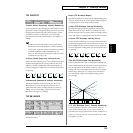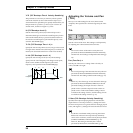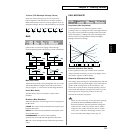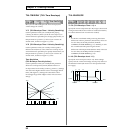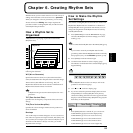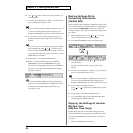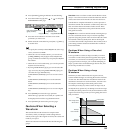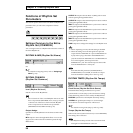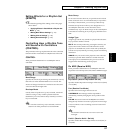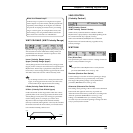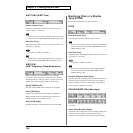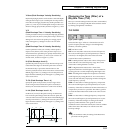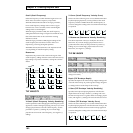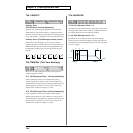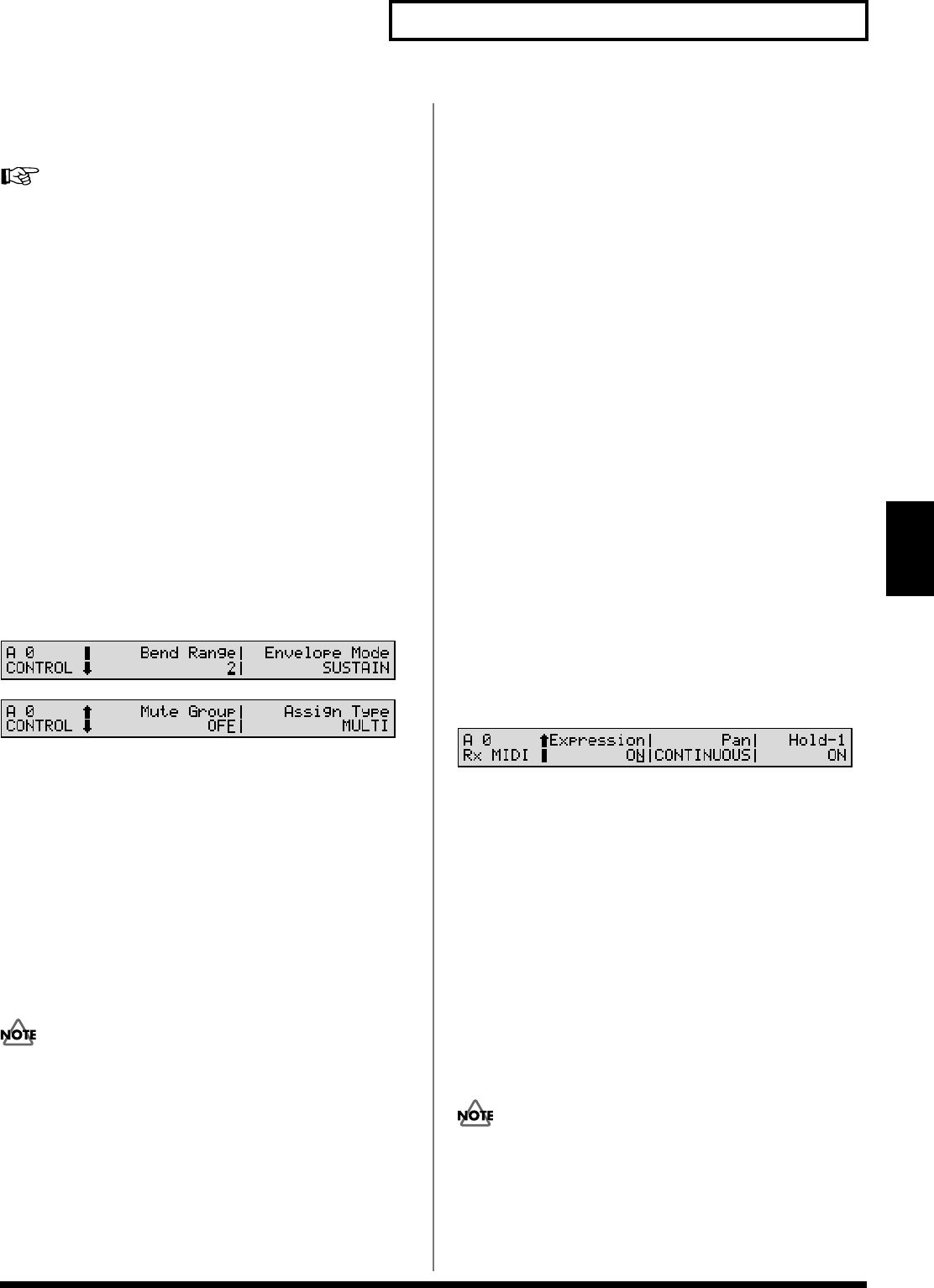
97
Chapter 6. Creating Rhythm Sets
Chapter 6
Setting Effects for a Rhythm Set
(EFFECTS)
For details regarding effect settings, refer to the pages
shown below.
• “Applying Effects in Patch Mode or Rhythm Set
Mode” (p. 106)
• “Making Multi-Effects Settings” (p. 114)
• “Making Chorus Settings” (p. 156)
• “Making Reverb Settings” (p. 158)
Controlling How a Rhythm Tone
will Sound with Controllers
(CONTROL)
The parameters in this group determine how the controllers
function and how instruments in a Rhythm Set will sound.
CONTROL
These parameters determine how each Rhythm Tone is
controlled.
fig.06-08
fig.06-09
Bend Range
Specifies the amount of pitch change in semitones (4 octaves)
that will occur when the Pitch Bend Lever is moved. The
amount of change when the lever is tilted is set to the same
value for both left and right sides.
Envelope Mode
Usually when a looped Wave (p. 95) is selected, sound will
continue as long as a key remains pressed. Select NO
SUSTAIN if you want sound to decay naturally even if the
key is not released.
If a one-shot waveform (p. 95) is selected, it will not
sustain even if this parameter is set to SUSTAIN.
Mute Group
On an actual acoustic drum set, an open hi-hat and a closed
hi-hat sound can never occur simultaneously. To reproduce
the reality of this situation, you can set up a Mute Group.
The Mute Group function allows you to designate two or
more Rhythm Tones that are not allowed to sound
simultaneously. Up to 31 Mute Groups can be used. Rhythm
Tones that are not belong to any such group should be set to
OFF.
Assign Type
Assign Type sets the way sounds are played when the same
key is pressed a number of times.
MULTI: The sounds produced by pressing the same key are
layered. Even with continuous sounds where the sound
plays for an extended time, such as with crash cymbals, the
sounds are layered, without previously played sounds being
eliminated.
SINGLE: Only one sound can be played at a time when the
same key is pressed. With continuous sounds where the
sound plays for an extended time, the previous sound is
stopped when the following sound is played.
Rx MIDI (Receive MIDI)
These parameters determine how each Rhythm Tone will
respond to received Expression/Pan/Hold 1 MIDI messages.
fig.06-10
Expression (Receive Expression Switch)
Specifies whether Expression messages will be received (ON)
or not (OFF).
Pan (Receive Pan Mode)
Specifies how Pan messages will be received.
CONTINUOUS: Pan messages will be responded to
immediately, instantly changing the stereo position of the
Tone.
KEY-ON: The stereo location of the Rhythm Tone will be
changed only when the next note is played. If a Pan message
is received while a note is sounding, its stereo location will
not change.
The channels cannot be set so as not to receive Pan
messages.
Hold-1 (Receive Hold 1 Switch)
Specifies whether Hold 1 messages will be received (ON) or
not (OFF).



